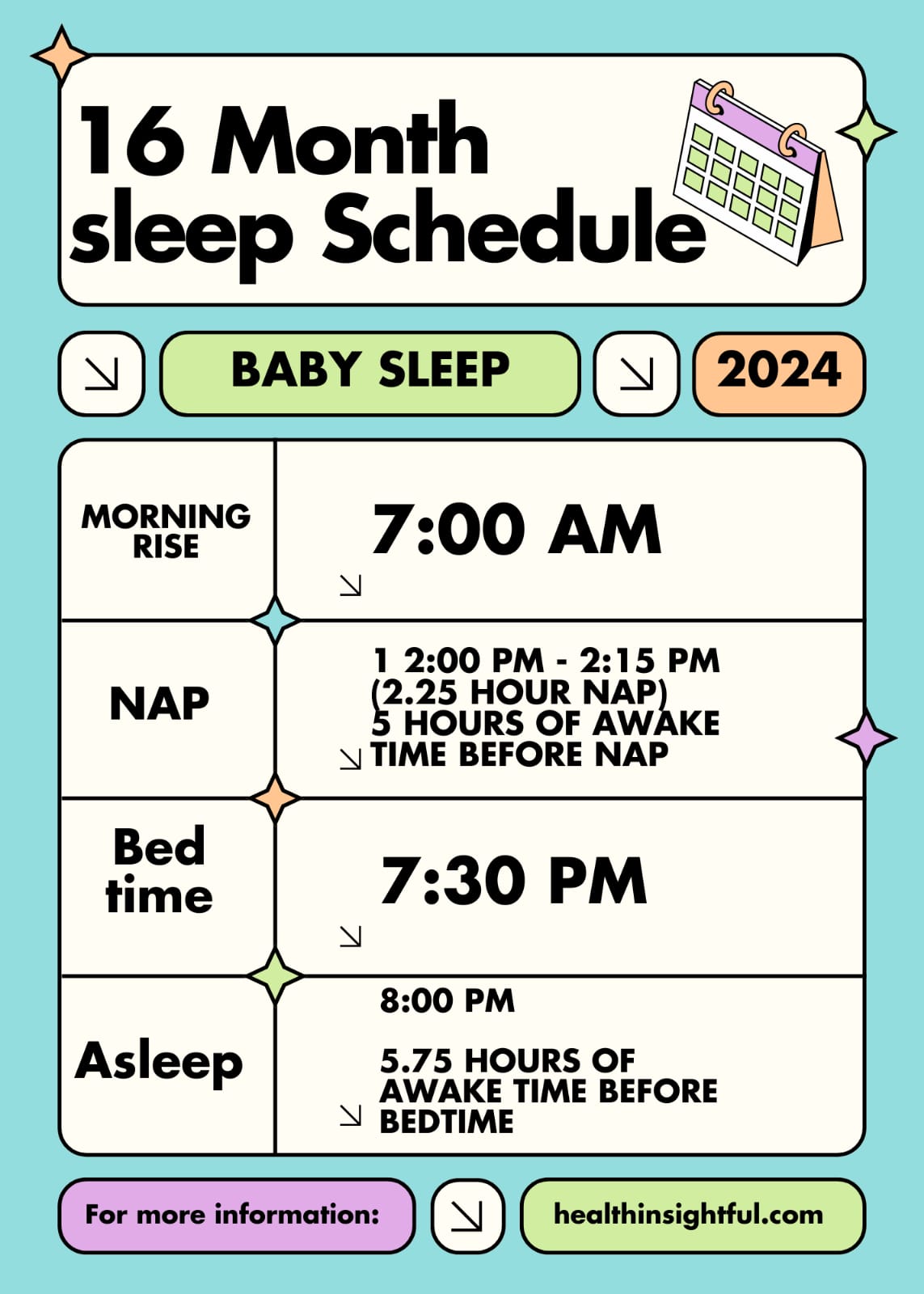It is a fact that keeping your baby on a regular sleep schedule will help him or her maintain overall health and wellbeing. One of the great working techniques that most parents love is the 7 pm to 7 am sleep schedule. Helping your baby to sleep and rest will also help you have your night in order and peaceful. This article will go into detail about how to get your baby to sleep through the night on the 7 PM to 7 AM sleep schedule, while helping one with their tips and strategies on how this routine can work for the family.
Why the 7 PM to 7 AM Sleep Schedule? The 7 pm to 7 am sleep schedule works with the natural sleep times that your baby has. To this end, it will mean that the baby can have up to almost 12 hours of sleep at night. This will be ideal for the rest that the baby needs to have. Another reason is that an early bedtime is good since it prevents your baby from oversleeping during the day. This may mean, however, that the baby has difficulty sleeping and, once asleep, staying that way.
Understanding Your Baby’s Sleep Needs
First, you must understand your baby’s sleep needs before diving into the 7 PM to 7 AM sleep schedule. A newborn needs about 14 to 17 hours in a day; this can either be nighttime or naptime. As time goes, your baby will sleep less, but your baby still needs much rest for further development.
Infants-usually sleep about 12 to 15 hours during a day inclusive of naps, while toddlers usually require about 11 to 14 hours of sleep. Understanding these needs will help you tailor the 7 PM to 7 AM schedule to your baby’s needs.
Bedtime Routine
Consistent bedtime routine will help your baby sleep through the night. Predictable activity makes your baby realize that this is time to be still and get ready to sleep. Here are some procedures you can introduce into your bedtime routine:
- Bath Time: A warm bath has proved soothing and relaxing for babies; it helps your baby phase out from playtime and automatically fall asleep.
- Pajamas: This is a method whereby the baby is dressed in comfortable, airy pajamas, implying sleeping time.
- Feeding: The last feed before retiring to bed will keep the baby full and not wake up in the middle of the night for food.
- Storytelling: Reading a short story in a soft tone will help your baby relax and regard bedtime as one of the quiet activities.
Some need to be rocked gently or hear a lullaby before they drift off to sleep.

Creating an Ideal Sleep Environment
Perhaps the second most powerful component of whether or not your baby would sleep through the night is the environment your baby sleeps in. Here’s how to create an ideal sleep environment:
- Dark Room: A dark room gives your baby’s brain signals that it is sleep time. You should dim the room, even in early evenings, using blackout curtains or shades.
- White Noise: You can use white noise machines or apps that mask the other noisy sounds throughout the house so your babies will sleep through it.
- Comforting Temperature: The room should be at a comforting temperature-usually between 68-72°F or 20-22 °C-so that he is neither too hot nor too cold.
- Safe Sleep Space: Ensure that the crib or bassinet is safe, having a firm mattress, and no loose bedding, pillows, or toys.
Setting Up the Pattern of Sleep between 7 PM and 7 AM

Setting up the sleeping pattern of 7 PM to 7 AM is like everything in life: it’s all about consistency. Here’s a step-by-step process for you to establish this routine.
- Morning Wake Time: This will be a time to wake up your baby, say, at 7 o’clock in the morning. As a matter of fact, this times everything else throughout the day and biological cycle.
- Following a Nap Schedule: Depending on the age of your baby, they will need one or several naps throughout the day. Make sure this happens at the same time each day so your baby will not be overtired or undertired by bedtime.
- Progress Bedtimes Gradually: If your baby tends to go to sleep very late, progress their bedtime 15 minutes earlier every couple of days until you build up to a bedtime of 7 PM.
Don’t let there be too much daytime sleeping. While babies need to nap, make sure your baby does not nap too much during the day, as it will keep them awake at night.
Create a bedtime routine:
As discussed above, a continuous bedtime routine will give your baby the notion of the correctness of time it is to fall asleep. This preparation for sleeping can be commenced about 30 minutes ahead before the time you would want your baby to rest.
- Drowsy but Still Awake: Put your baby in his bed so that he will learn to fall asleep on his own. When he wakes up in the middle of the night, he will learn to go back to sleep.
- Night Wakings: It is normal that a baby wakes up at night, especially in the first months of life. However, there are measures to be adopted in order that they learn to sleep through the night.
WAIT TO RESPOND When your baby wakes up, wait a short time to see if they will go back to sleep on their own. If they continue to cry, check that they do not need to be changing and reposition your baby properly in a comfortable and safe position, but avoid picking them up immediately.
- Night Feedings: If your baby wakes for night feedings, keep it low-key. Keep the light and noise minimal. Over time, gradually decrease the amount of milk or time spent feeding to help your baby sleep longer stretches.
- Self-soothing Techniques: Allow plenty of opportunity for your baby to learn how to fall back to sleep using his own self-soothing techniques, such as falling asleep by sucking on a pacifier or finding a comfortable sleep position.
Sleep regressions are normal; however, they break your baby’s patterns of sleep. They do usually occur at growth periods or when some developmental achievements take place. Here is how to handle them:
- Be Consistent: Stick to your bedtime routine schedule and the 7 PM to 7 AM timings-even though your baby may go through a sleep regression once in a while.
- Additional Comfort: Your baby might need comforting and reassurance more than ever during this sleep regression. Give extra cuddles or do soothing activities before bedtime.
- Be Patient: Sleep regressions are normally temporary. With patience and persistence, your baby will get back to their natural pattern of sleep.
Changing the Schedule as Your Baby Grows
You will most likely do a little tweaking and fine-tuning on the 7 PM to 7 AM sleep schedule as your baby gets a little older and their sleeping needs adapt. Here are a few things you could tweak:
- Lesson Naps: As your baby ages, he requires less naps throughout the day. Work on this nap schedule gradually so they will keep being tired enough at night.
- Slightly Later Bedtime: If your toddler requires less nighttime sleep, you can work their bedtime a little later-such as 7:30 PM or 8 PM-while still working for 12 hours of sleep.
- Include Quiet Time: Gradually introduce quiet time with ample afternoon sleeping in the afternoon, where the child can rest or entertain themselves during low-key activities. This way, your child is not overtired at night.
Conclusion
The 7 PM to 7 AM will just help ensure the baby really gets the rest while allowing mom and dad a more manageable evening and night. Paying attention to your baby’s cues, initiating a bedtime routine, and creating a sleep-conducive environment gets you on the right track for success in helping your baby sleep through the night. It is about punctuality and persistence; with time, your baby will get used to such a schedule, which ultimately will mean better sleeping for the whole family.










